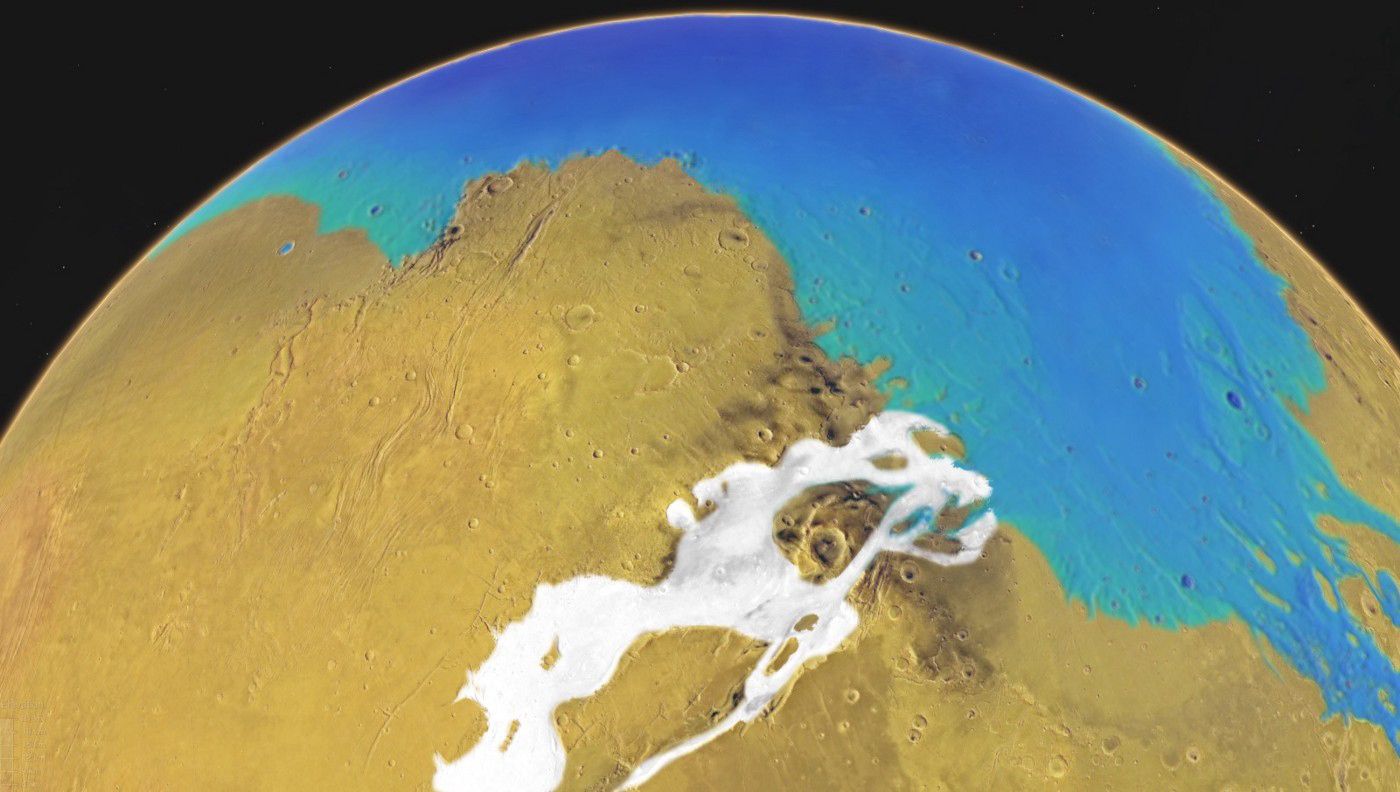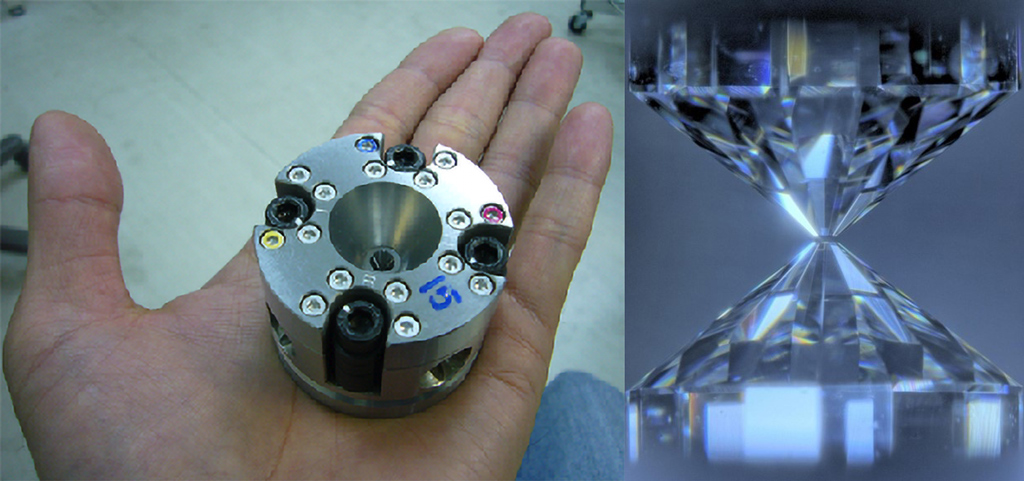A NASA-funded simulation of past Mars has revealed that the red planet was wetter for 500 million years longer than previously thought, giving life more time to develop.

When we think of Mars, we think of a red planet, barren, covered in dust and rocks and ancient lava flows. There’s an ongoing debate about the existence of liquid water under the polar ice caps. We’ve tracked seasonal changes with a host of satellites. And we have a small collection of rovers wandering the surface, sampling, analyzing, and collecting rocks. There are sedimentary rocks that were clearly created due to the flow of water. We’ve seen pictures of stream channels and river deltas, and Perseverance landed in what we think was an ancient crater lake bed.
And yet, no life. Granted, Percy is the first rover really tasked with looking for signs of life, and even it’s not allowed to sample where we think life could still be if it were there. We seem, on the whole, to be hopeful that we’ll find evidence of life or past life because of that wet history of Mars, even if most of the water is gone, whether it has escaped the thin atmosphere or gone underground.
Now, in a new paper published in the Proceedings of the National Academy of Sciences, a NASA-funded simulation of past Mars has revealed that the red planet was wetter for longer than previously thoughts — about 500 million years longer. The research into Mars’ past conditions is not an easy task, as co-author Michael Way explains: Discerning the climate of Mars approximately three billion years ago is challenging because the Martian surface features do not seem to fully support either a warm and wet or cold and dry climate during that time. A warm and wet climate would have produced extensive erosion from flowing water, but few valley networks have been observed from this age. A too-cold climate would have kept any northern ocean frozen most of the time. A moderate cold climate would have transferred the water from the ocean to the land in the form of snow and ice. But this would prevent tsunami formation, for which there is some evidence.
This new simulation found not only a cold and wet Mars was possible, but there might have even been a stable ocean in the northern hemisphere where the atmosphere was dense and warm. That would make it possible for the water to evaporate but then fall back to the surface as rain or snow. In nearby highland regions, the snow could accumulate enough to become glaciers, and those glaciers would flow back down to rejoin the ocean.
And that northern ocean means a mechanism for circulating warmer water to the north pole, raising temperatures there as well.
Factor in the evidence that Mars’ atmosphere was thicker in the past, and you can now keep Mars warm for a longer period of time than previously thought. A warmer, wetter planet for an extra 500 million years gives you that much more time and the right conditions for life to develop.
The evidence is piling up for a habitable past Mars, and I’m excited to contemplate what future rock samples might find.
Just How Did Mars Lose All That Water?
Early Mars was not only wetter and warmer than it currently is, it also had a similar magnetic field to Earth’s, which weakened over time, causing water loss.
Knowing that Mars had water isn’t a new thing. As mentioned in the previous story, we’ve seen evidence of river beds, stream flows, and lakes. The water was there, and now it’s not. That’s definitely not a question. The question is what made the water disappear?
It turns out that early in Mars’ history when there was a northern ocean and precipitation and wetter conditions, there was also a magnetic field similar to what we have here on Earth. That magnetic field helped protect Mars’ atmosphere, which kept the water on the surface. Then the magnetic field disappeared, and in new research published in Nature Communications, a team has possibly solved just why that magnetic field went away.
Co-author Kei Hirose explains the logic behind these recent simulations: Earth’s magnetic field is driven by inconceivably huge convection currents of molten metals in its core. Magnetic fields on other planets are thought to work the same way. Though the internal composition of Mars is not yet known, evidence from meteorites suggests it is molten iron enriched with sulfur. Furthermore, seismic readings from NASA’s InSight probe on the surface tell us Mars’ core is larger and less dense than previously thought. These things imply the presence of additional lighter elements such as hydrogen. With this detail, we prepare iron alloys that we expect constitute the core and subject them to experiments.

And once again, we see scientists getting to play with diamonds and lasers. They created a sample of material containing iron, sulfur, and hydrogen. These are the elements they think Mars’ core used to be made from. They then placed the sample between two diamonds, compressed it, and hit it with an infrared laser. Observations were taken with X-ray and electron beams, and the team was able to see what happened as the sample melted under pressure and how the composition changed over time.
Basically, the material separated into two liquids, which would have given Mars the convection currents necessary to make a magnetic field. Eventually, however, the two liquids completely separated, the currents went away, and with those, the magnetic field disappeared. Without the magnetic field, the atmosphere got blown out to space by the solar winds, and the water vapor in the air broke down and escaped, followed by the surface water as it evaporated over time.
So life could have developed, but it likely only had a narrow window to do so, even if that window is slightly longer than we originally thought.
More Information
NASA press release
“Circumpolar ocean stability on Mars 3 Gy ago,” Frédéric Schmidt et al., 2022 January 25, PNAS
The University of Tokyo press release
“Stratification in planetary cores by liquid immiscibility in Fe-S-H,” Shunpei Yokoo et al., 2022 February 3, Nature Communications
This story was written for the Daily Space podcast/YouTube series. Want more news from myself, Dr. Pamela Gay, and Erik Madaus? Check out DailySpace.org.
Originally published on medium.com.





